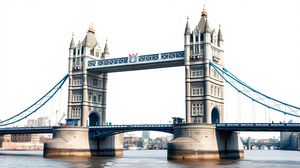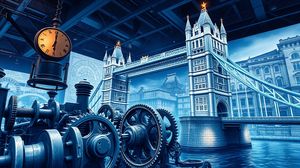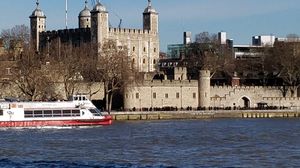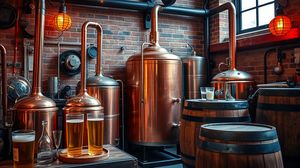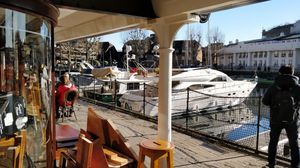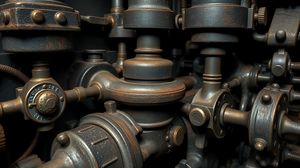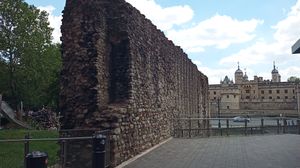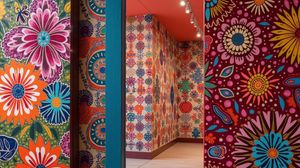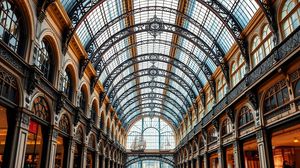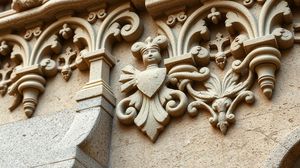
The Tower Bridge Engine Rooms offer visitors a unique glimpse into the past, showcasing the original steam engines that were once vital to the bridge's functioning. These historic machines operated the bridge's drawbridge mechanism, allowing ships to pass safely along the River Thames.
Built in the late 19th century, Tower Bridge was an engineering marvel of its time, and the engine rooms are a testament to the ingenuity and ambition of the Victorian era. The steam engines, Victorian boilers, and accumulators are beautifully preserved, providing a fascinating insight into the industrial heritage of London.
The engines are stunning pieces of machinery, painted in their original vibrant green and red colors. These colors were chosen not just for aesthetics but also for practicality, helping engineers quickly inspect for any faults or areas that required maintenance.
An interesting fact about the Engine Rooms is that until 1976, the hydraulics were powered by coal-fired steam engines. After that, an electro-hydraulic system took over, marking a significant shift in the technology used to operate the bridge.
Another intriguing feature of the Engine Rooms is the opportunity they provide to witness the workings of massive accumulators. These hydraulic accumulators stored energy by pumping water, which could later be released to power the engines — a clever system that ensured the bridge could be raised promptly.
Visiting the Engine Rooms is a multisensory experience. The smell of oil lingers in the air as the sound of the engines' mechanisms resonates, giving visitors an authentic feel of the operational powerhouse that once kept the iconic structure moving.
What many people find fascinating is that despite advances in technology, the basic principles of hydraulic engineering remain unchanged. The Tower Bridge Engine Rooms are a perfect place to appreciate how past innovations continue to influence modern engineering

Making the Most of Your Visit:
As you explore the Engine Rooms, pay attention to the information boards and displays that provide deeper historical context and anecdotes about the people who worked here. Their stories often bring a personal touch to the engineering marvels you're seeing.
If possible, time your visit to coincide with a scheduled bridge lift. The experience of seeing the bridge in action adds an extra layer of appreciation for the engine rooms, knowing the immense power these machines once provided to achieve such a feat.
Look out for the details in the machinery, such as the beautifully crafted dials and the intricacy of the pipework. Each element has its purpose and was handcrafted with precision — try to imagine the immense skill and labor it took to assemble these engines over a century ago.
Once you're in the Engine Rooms, spend a moment to appreciate the soundscape. The echoing footsteps and ambient noise mimic the hustle and bustle of an operational industrial setting, giving you an authentic sense of what it might have been like when coal-fired engines were the lifeblood of the bridge.
Don't rush through it! Take your time to truly get to grips with how the various components work together. You might want to sketch or photograph some items — yes, those vibrant greens and reds truly pop, and having a photo can help you recall this unique blend of history and engineering long after your visit.

Visiting Times & Costs:
The Tower Bridge Engine Rooms are open to the public as part of the Tower Bridge Exhibition.
Opening Hours:
- Typically open daily throughout the year, except from December 24-26.
- Opening hours are from 9:30 AM to 6:00 PM (last admission at 5:00 PM).
Admission Fees:
- The Engine Rooms are included in the admission ticket to the Tower Bridge Exhibition.
- General admission fees apply, with concessions for children, seniors, and students.
- Tickets are required for entry, and it's recommended to purchase them in advance, especially during peak tourist seasons.
Accessibility:
- The Engine Rooms are accessible to visitors with mobility impairments, though some areas may have uneven surfaces.
- Assistance dogs are welcome.
- There are facilities available for visitors with disabilities.

Address & Map:

Nearby:

